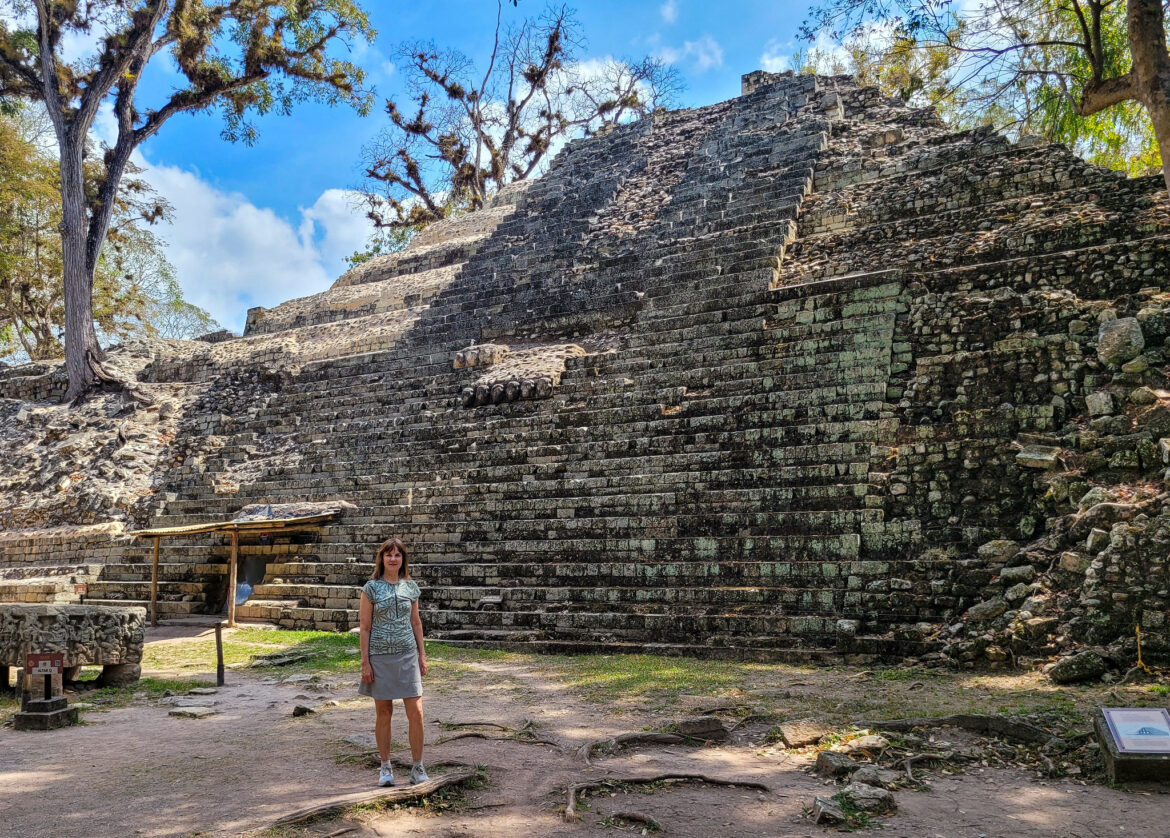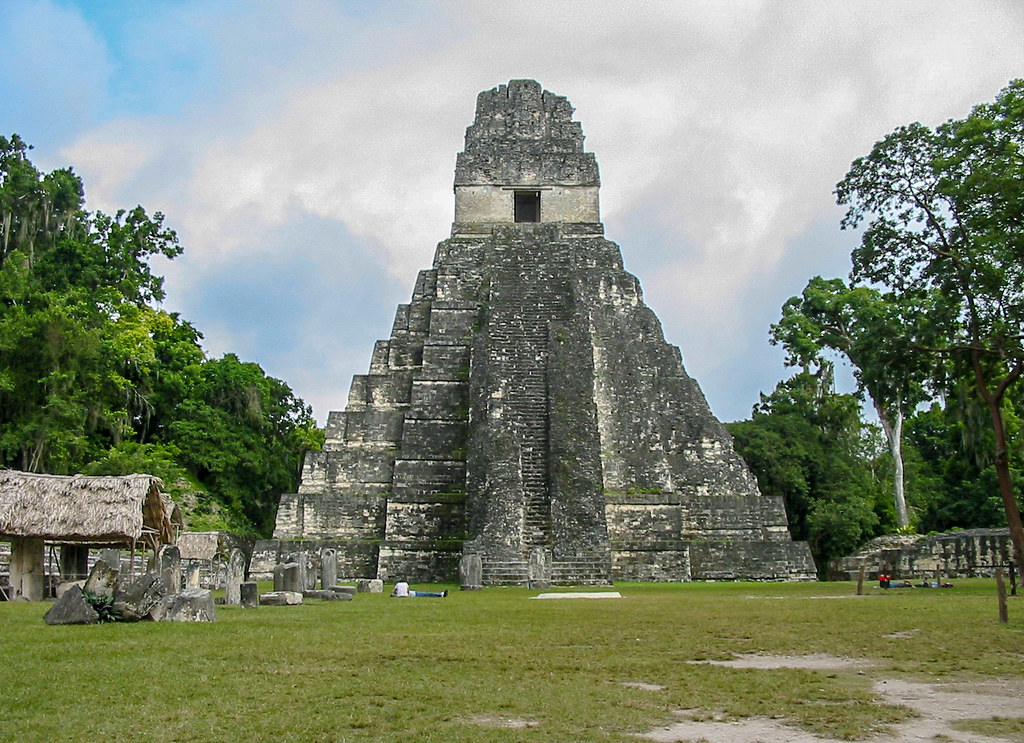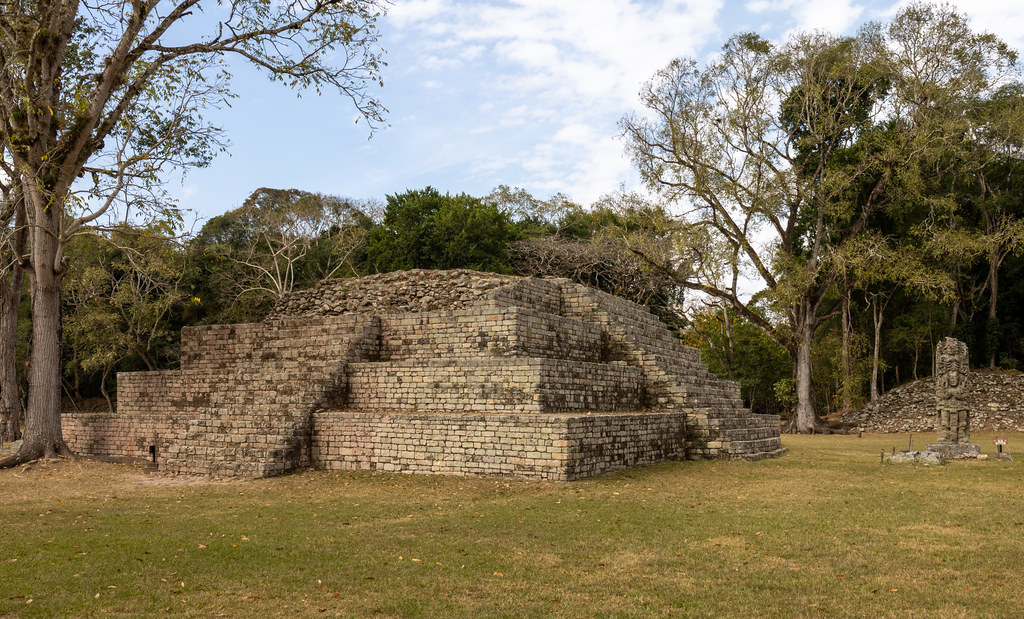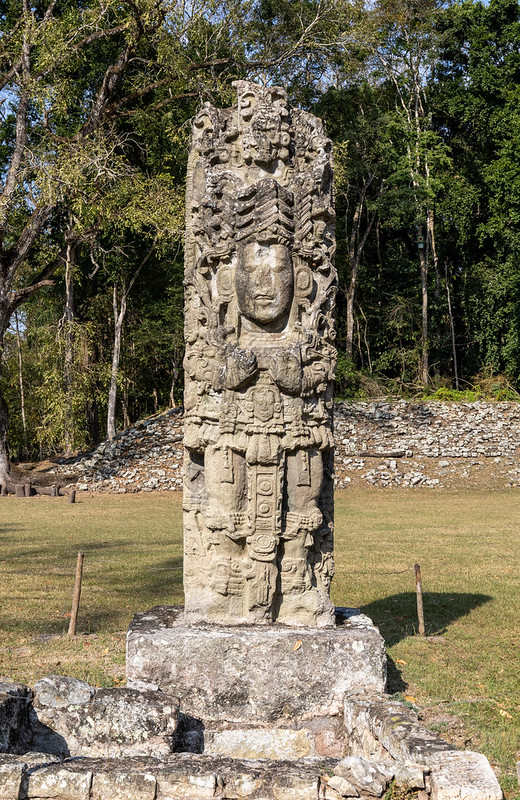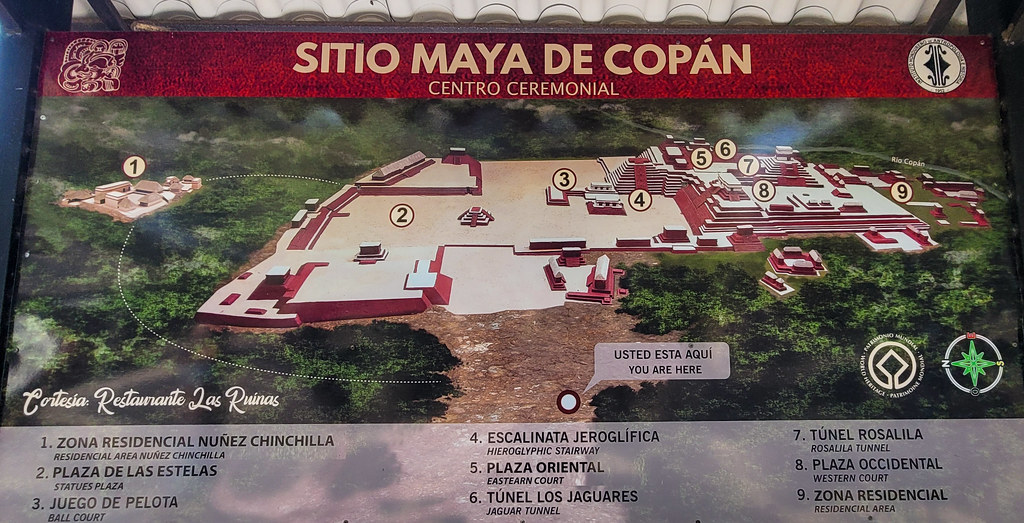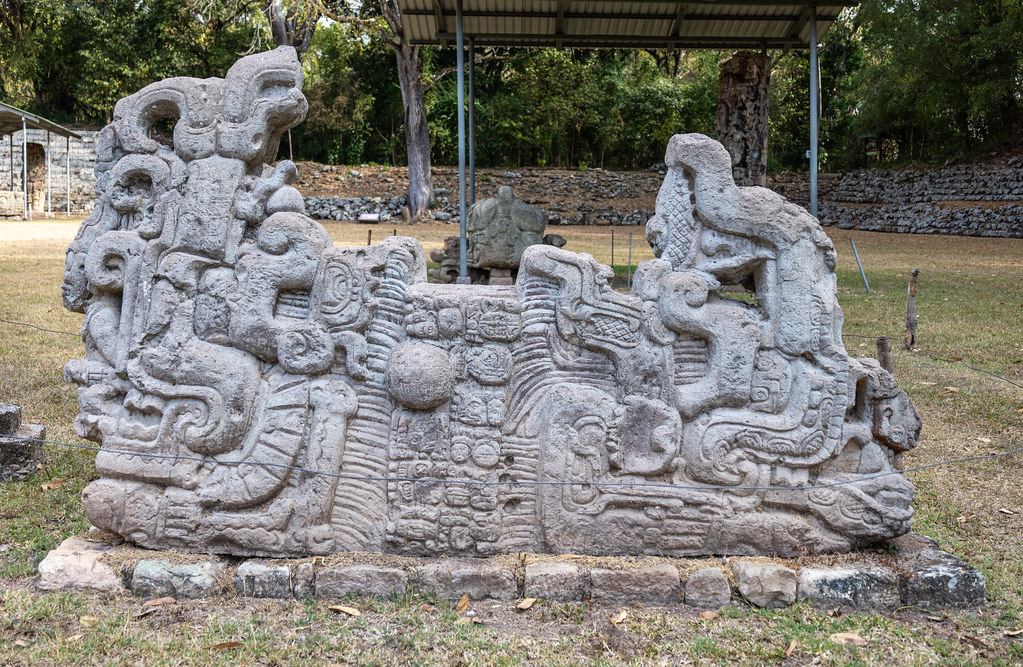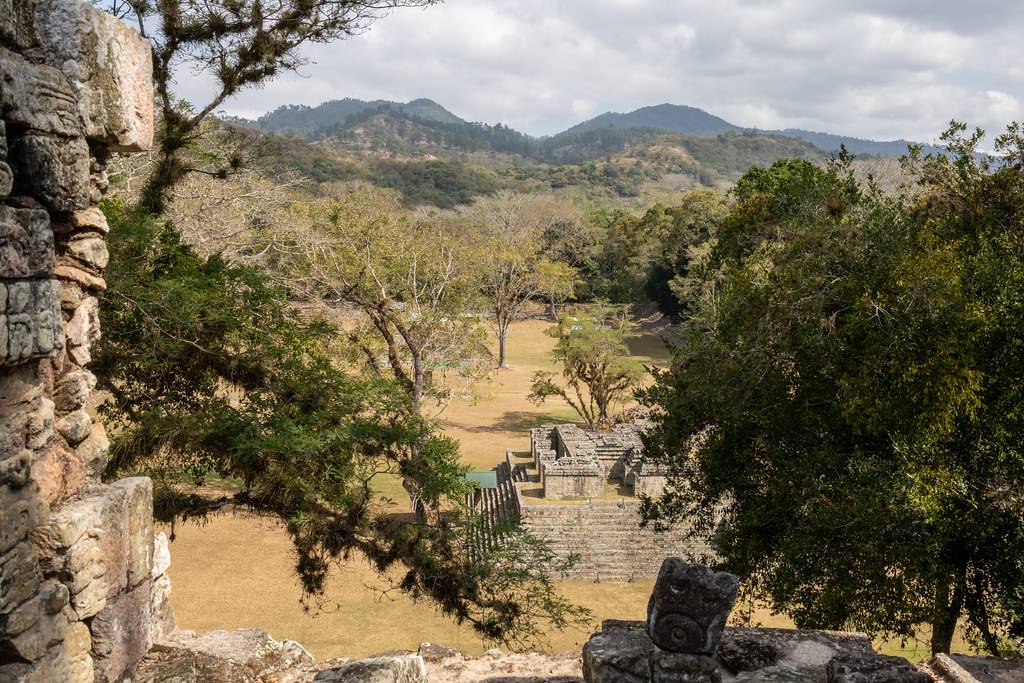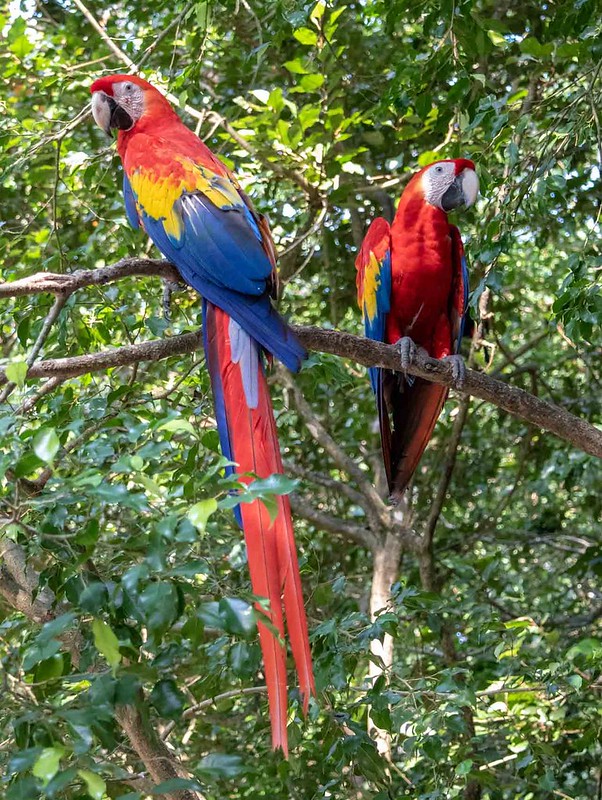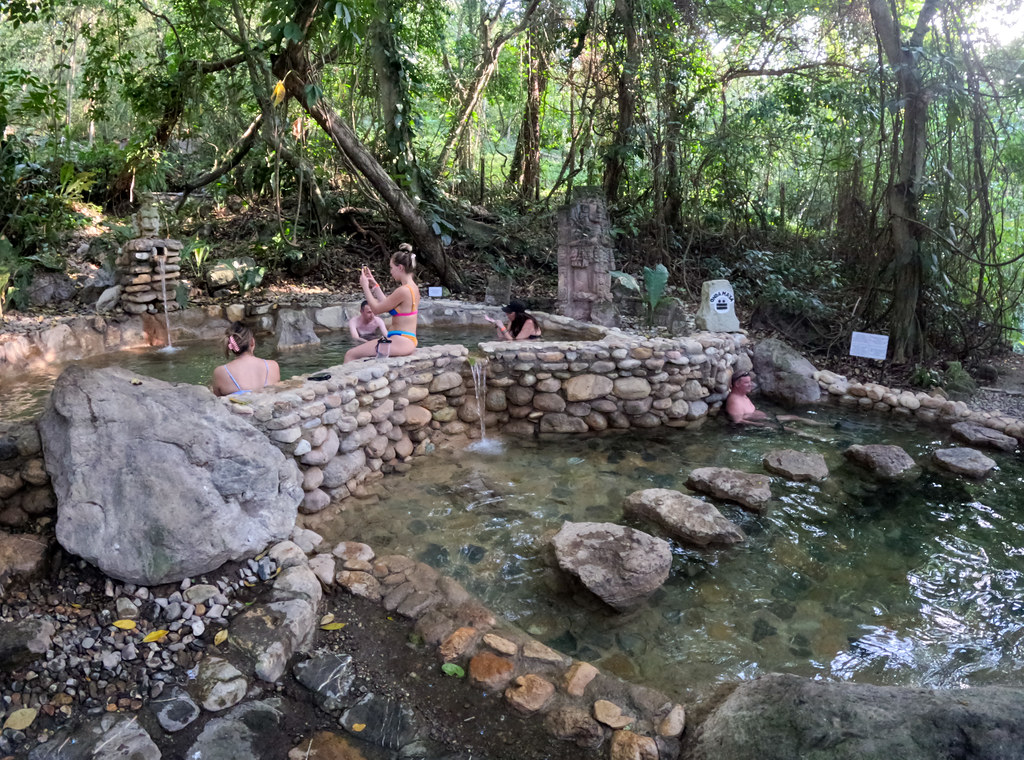Nestled in the lush jungle of Honduras is one of the most beautiful Mayan ruins in Central America. Known for its unique sculptural style, these ruins are preserved as both history and art. This is a must-see destination for anyone interested in archeology. I spent an incredible day on a Copan Honduras tour exploring the Mayan ruins, Macaw Mountain and Luna Jaguar Spa. Our day was amazing, and I love sharing these tips. So, read on and learn why you should visit the incredible Copan Ruinas.
Located in western Honduras near the border of Guatemala, Copan Ruinas is located just outside a colonial town of the same name. Besides the ruins, the area is known for producing tobacco and cigars. The name “Copan” comes from the chief, Copan Galel, a warrior who protected the Mayan lands before the Spanish colonization. The lush, fertile Copan Valley lies among scenic foothills.
My Amazing Day at Copan Valley
We arrived at the ruins by 8 am on our tuk-tuks. I highly suggest going early to avoid the heat and crowds. While you could spend a whole day at the ruins, a half day was enough for me. We then continued after lunch for a couple hours at Macaw Mountain learning about the Honduran national bird. In late afternoon we took a 45-minute shuttle ride to the Luna Jaguar Spa for rejuvenation at their hot springs and mud baths. Overall, we enjoyed our itinerary with enough time, because everything was planned and organized.
About Maya Civilization
The land of the Maya spread out over all of Guatemala and Belize, western Honduras, El Salvador and southern states of Mexico. The “Golden Age” of the Maya Civilization happened from 250 to 900 A.D. The principal centers of the Mayans included the most famous sites today, such as, Tikal, Copan, Palenque and Chichen Itza.
Related: Guatemala’s Amazing Tikal Mayan Ruins Tour
The Maya civilization is known for its advanced achievements in areas such as astronomy, architecture, mathematics and writing (hieroglyphs). They developed 2 overlapping calendars, predicting eclipses and important events. These include a 260-day sacred year and a 365-day secular year. The overall cycle restarts every 52 years. Their pyramids were important sites for numerous functions, like burials for officials, astronomical observatories, public rituals and ceremonies and even human sacrifices.
Check out my Youtube Video!
Copan Honduras Tour
Mayan Ruins, Macaw Mountain
& Luna Jaguar Hot Springs
Archeological Park of Copan
Copan became excavated in the 19th century and declared a UNESCO World Heritage Site in 1980. While Tikal is considered the largest of the Mayan civilizations, Copan is considered the most advanced in the arts. In our social terms, it can be said that while Tikal is the New York of the Mayan civilization, Copan was the Paris.
Copan is most well-known for its exquisite Mayan stone carvings in the stelae and altars. Copan’s unique sculptural style possibly expressed symbols about the city rulers. Overall, there are about 80 stelae at Copan. The site’s portrait stelae series stand along the processional paths in the main plaza and palaces. One of the reasons for the well-preserved sculptures is because this area provides ideal raw materials, a volcanic tuff.
Copan was a vast kingdom ruling the southern Maya culture for almost 2,000 years. At its peak from 600 to 900 A.D., the population reached about 20,000. Some of the ruins became eroded by the Copan River, which became diverted to protect the site.
Copan Ruins Layout & Important Structures
I am by no means an archeologist. Through my research and tour guide, I designed a simplified overview in this article for layman tourists. I highly encourage those interested in archeology to hire a guide for a better understanding of this complex site. It is all compact and makes for a wonderful walking tour in the lush jungle.
Also, on site be on the lookout for the Honduran National Bird, the Scarlet Macaws. Actually, you can’t miss them as they are so loud and everywhere!
Top Things to See at Copas Ruinas
The 2 main principal areas of the site are The Great Plaza and Acropolis. Overall, these areas consist of plazas, step-pyramids, palaces, ballcourt, temples and sculptural art (stelae and altars).
Statues Plaza is the first thing you see on a grassy open area. It exhibits seven stelae, alongside Structure 4, a pyramid with staircases on all 4 sides. The stelae developed into religious art in the 8th century during the long reign of 18 Rabbit. He created these seven stelae, portraying himself as a God.
Hieroglyphic Stairway displays the longest discovered Mayan text. It stands at 21 m high with more around 2,000 glyphs etched in 63 stairs. The glyphs depict the history for the 5th to 8th century rulers. The bottom stairway begins with Yax K’uk Moh and ends with the death of 18 Rabbit at the top.
Overall, the Hieroglyphic Stairway is one of the most important monuments in all of the Mayan civilization. Because it’s so well-preserved, the stairway provides insights into the Mayan written language and hieroglyphs.
Ballcourt is where the popular Mesoamerican sport was played. This is one of the biggest courts built by the Mayans. Its alley is bordered by buildings and benches decorated by scarlet macaws. Interestingly, this game was played with a ball made of solid rubber. So, the ball was heavy and maneuvered with hips and thighs. This game was literally a blood sport, in that the loser was often sacrificed to the Gods.
Acropolis is the headquarters for the rulers. It consists of the West and the East Courts. The East Court was a place of sun worship and the west court dedicated to the Mayan water underworld. Archaeologists excavated tunnels under the Acropolis, revealing how the royal complex developed. Don’t miss the view from the top of the Acropolis, as seen above.
Sculpture Museum
For archeological buffs, don’t miss the Sculpture Museum near the archeological site. Built in 1993, the museum preserves and houses more than 3,000 sculptures from Copan.
About Honduran National Bird, Scarlet Macaw
The Scarlet Macaw is much more than just the national bird of Honduras. It is highly revered in Honduran culture and even embodies the colors of the Honduran flag. The scarlet macaw is a large part of the traditional myth and lore in Honduras. Also, the scarlet macaw represents longevity, living up to 100 years in captivity. The main threats to the scarlet macaw include the pet trade, deforestation and agricultural expansion.
Macaw Mountain Bird Park
Rescue, Release & Rehabilitation Center
The history of Macaw Mountain began on Roatan Bird Park. This was the testing ground for 5 years where a lot was learned about the macaws’ diet, nutrition, social and well-being. Later, the bird park expanded here in Copan about 30 years ago.
A tuk-tuk ride away from Copan Ruinas, we enjoyed a couple hours with a guide on a walking tour of the site. This is the first macaw rescue and release and rehabilitation center in Honduras. The owner is an American who developed this bird sanctuary. It is home to injured and neglected macaws from all over the world.
The Macaw Mountain provides a look inside the rescue, release and rehabilitation of these vibrant birds. Also, the setting includes botanical gardens, aviaries, forests and walking trails. Besides the macaws, I observed other rescued exotic bird species, such as, Toucan, King Vulcan, Green Macaw, Blue and Gold Macaw and White-crowned Parrot.
Luna Jaguar Spa and Hot Springs
Copan Honduras Tour
A great way to end a day at the Copan Valley is at the natural eco spa, Luna Jaguar Spa. We took a 45-minute shuttle ride to this site immersed in the jungle near Agua Caliente.
This natural hot springs spa spreads out among thermal waters up to 90 degrees F in the lush forest. Overall, the pools vary in temperatures, including cold waters. The Mayan theme continues here in the setting and architecture all around the site. Also, don’t miss the pool with mineral-rich mud for a rejuvenating mud bath. The Temple of Massages provides various types of treatments for the ultimate R & R.
Accommodations and Restaurants in Copan Ruinas Village
The quaint Copan Ruinas village is the perfect hub from which to explore the area. It’s a quick tuk-tuk ride to both the Mayan ruins and Macaw Mountain. The Luna Jaguar Spa is just a 45-minute shuttle ride. I loved our accommodation here at Buena Vista Hotel. Perched up on a hill, it’s just a 10-minute walk to the main town square. The hotel offers a nice swimming pool with a panoramic view of the town and valley below. At request breakfast is available for $10.
Copan Ruinas offers numerous restaurants. I enjoyed a traditional Honduran meal and recommend the Sabor Chapin Restaurant near the town square. Also, I savored some early morning coffee and pastries from the Welchez Café on the town square open by 6:30 am.
Enjoy Copan Ruinas!
I absolutely loved everything about my full day itinerary in Copan Ruinas! Learning about the Mayan ruins, the national bird and dipping in the therapeutic hot springs took me to the heart of Honduran nature and culture. If your travels bring you to Copan, please share any tips below in the comments.
Read Next!
20 Top Things to Do in Historic Antigua, Guatemala
Wonderful El Salvador Travel Highlights at Suchito and Beachfront Hotel
Caribbean Roatan Island Beaches & Jungle – A Honduras Paradise

